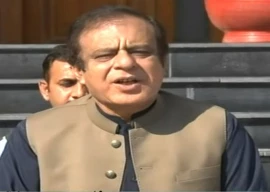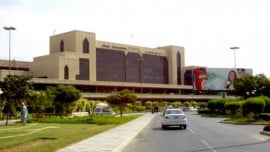
Grime and germs aside, trains do have a strange romanticism about them. Even a 16-hour trip on Pakistan Railways can’t destroy the sense of adventure a train journey promises, far removed from the clinical process of boarding a flight and hours of aerial insulation.
The romanticism may be Bollywood’s fault — after all, the railways have been ingrained in one’s memory thanks to the haunting sounds of trains in Pakeezah, the mad capers of Shahid and Kareena Kapoor in Jab We Met and Shah Rukh Khan reaching out to Kajol in that last scene of Dilwale Dulhania Le Jayenge.
We have our former colonial overlords to thank for the trains, still used by thousands of people on a daily basis. Last year, the government ran an advertisement in local newspapers. Headlined ‘Massage of Public Interest’, the slogan read: ‘Railways is your asset, Protect it’. And while no one may want to protect the state asset, the British Raj’s legacy has been frozen in time at the Railway Heritage Museum in Golra Sharif, about 30 minutes away from Islamabad.
The museum isn’t of the hallowed, antiquity-packed variety — a blessing for those with an aversion to dusty rooms overrun with hordes of tourists. It opened in 2002 with the help of funding by the European Union and is housed in two rooms that were originally part of the railway station. The station master points out the sturdy furniture, working fans and light fixtures, and the grills on the windows (“Made in London!”) which date back to pre-Partition, and the tour guide plays a few notes on the piano to demonstrate that it still works.
The museum is also home to a private railway car built for the Raja of Jodhpur’s use in 1888, and then gifted by him to his daughter.
A motley crew of artefacts is on display from the heyday of the North Western Railways. Lord Mountbatten’s crockery, gazettes, clocks and photos, gas heaters, guns used by guards at train stations, first aid boxes, fireplaces and a station master’s old coat have all found a home here. For inexplicable reasons though, the museum also houses a railway communication system captured from Indian territory during the 1965 war. The station master, who also gives visitors tours of the museum, gravely intones, “Consider this a symbol of our victory.”
For all intents and purposes, the sun doesn’t seem to have set on the Empire at Golra Sharif railway junction.
The most amusing sight of all is a series of advertisements placed by the British government in the late 1800s to convince the subcontinent’s population about their newest import: tea. One poster details the method of making tea through diagrams, and another describes the cost and benefits of tea. Another shows three men — Hindu, Muslim and Sikh — enjoying a hot cuppa. Much has changed since the ads were placed, but at least the tradition of serving tea on board a train hasn’t. Angrez to chale gaye, chai chorr gaye?
Published in The Express Tribune, November 7th, 2010.


































1713509570-0/Taylor-Swift-Album-Release-(1)1713509570-0-270x192.webp)






















COMMENTS
Comments are moderated and generally will be posted if they are on-topic and not abusive.
For more information, please see our Comments FAQ